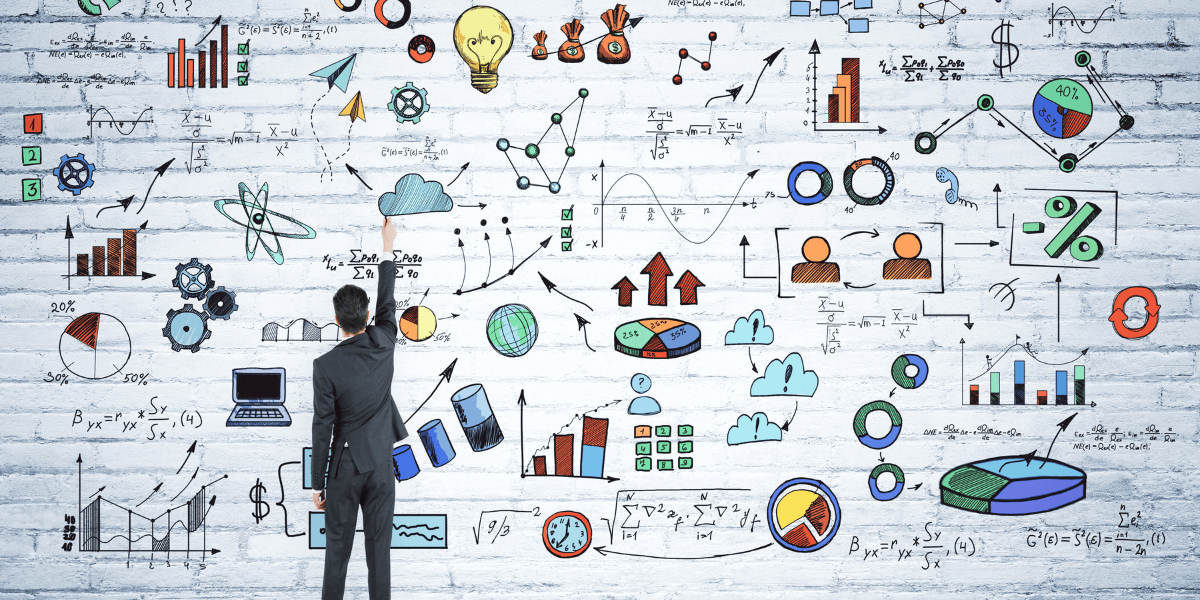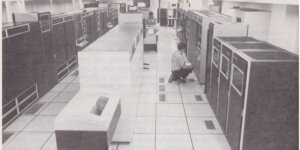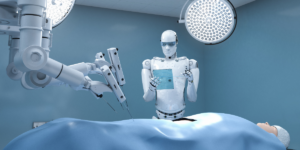
Photo Credit: peshkov/getty images
Fifty years ago, in 1972, Atari released the first commercial video game, the scientific pocket calculator debuted, the floppy disk was patented, the Internet (as we now know it) did not exist, and USC’s Information Sciences Institute (ISI) was nothing more than a handful of scientists working on networking computers from the top floor of an otherwise empty building in Marina del Rey, California.
Computing technology has come a long way in 50 years, and it’s advancing at a seemingly exponential rate. Can you imagine what’s to come 50 years from now, in 2072? These ISIers took a stab at it
Our Prediction-Makers (in order of appearance):
Carl Kesselman, Director of the Informatics Systems Research Division and ISI Fellow
Steve Crago, Research Associate Professor; Associate Director of ISI; Director of the Computational Systems and Technology Division
Wael AbdAlmageed, Research Associate Professor of Electrical and Computer Engineering; ISI Research Director
Mayank Kejriwal, Research Assistant Professor of Industrial and Systems Engineering; ISI Research Team Leader
Emmanuel Johnson Postdoctoral Research Associate
Kristina Lerman, Research Professor; Research Team Leader; ISI Principal Scientist
Abigail Horn, Research Assistant Professor of Industrial and Systems Engineering; ISI Research Lead
John Heidemann, Research Professor; ISI Research Team Leader; ISI Principal Scientist
Ewa Deelman, Research Professor; Research Director of Scientific Computation Technologies; ISI Principal Scientist
Craig Knoblock, Vice Dean of Engineering and Michael Keston Executive Director of ISI; Research Professor of Computer Science and Spatial Sciences
Joel Mathew, Research Engineer
Michael Pazzani, ISI Principal Scientist
Jelena Mirkovic, Research Associate Professor, ISI Research Team Leader
Alefiya Hussain, Senior Computer Scientist, ISI Research Lead
Jon May, Research Associate Professor of Computer Science, ISI Research Team Leader
First: Disclaimers
Fifty years is a long time, especially when it comes to technology; this gave some folks pause. “It’s hard to predict 50 years. You’d be lucky to predict 10!” said Carl Kesselman. However, Steve Crago didn’t hesitate to weigh in: “I predict that in 50 years, we will be laughing at the predictions we made today.”
Beep Boop! Here Come the Robots
Many ISIers had thoughts on robots. When asked what his team would be doing in 50 years, Wael AbdAlmageed said they’d be “discussing a report from a fully autonomous robot that went on a mission to explore life on Mars.”
Mayank Kejriwal had ideas on how those robots might impact the work done here at ISI: “I think the way we do research will have completely changed in 50 years, and we’ll have humans and machines writing papers and winning prizes together (certainly this is something I am actively working toward).”
But what about those of us not doing advanced research, will there be robots for us? Emmanuel Johnson said yes: “I think we will see more robots that are socially aware and thus able to engage more naturally with us at home, work and in more social settings. I see robots acting as nurses in nursing homes, teachers’ assistants, personalized tutors, and in a range of functions where they must deal with the ambiguity of real-world social interaction.”
With all these robots, do we need to worry about the “S-word” (sentience)? Well… maybe. Kejriwal said in 50 years “we’ll be having active discussions on whether machines have rights, and what it really means for a being to be ‘sentient’.”
Improving the Human Condition with Tech
Robots and technology will be all around us. And maybe, inside of us?
Abigail Horn had predictions about implanted sensors. “I think there’s going to be so much individual level biometric data measured from sensors that are implanted in people in a safe way, that can help us understand at a precise level people’s health and everything that they’re doing throughout their day. And there are going to be individual level cues for how people can improve their behavior (i.e., how it’s going to make them feel if they choose this versus that). The integration between behavior and sensor data at an individual level is going to be crazy… but it’s going to be safe!”
Speaking of implantables, John Heidemann added this personal anecdote: “I was at dinner the other night and we were trying to decide what the capital of Latvia was, and so I took out my cell phone and I looked it up. Maybe in 50 years I’ll do that in my head. I wouldn’t be surprised.”
Johnson saw additional possibilities for how technology will impact us as humans: “I think the way we learn and interact with each other will be significantly changed in the next 50 years. I see AI making learning more personalized with technologies that allow us to easily learn a skill through a personal coach. This coach will be useful for motivation as well as guidance as we learn new skills. I see more focus on learning being placed on interpersonal skills development and our AI systems playing a larger role in how we acquire those skills as well as how we interact with each other.”
AI coaching was a bit of a theme. Kristina Lerman predicted this, along with other applications: “I am very interested in how AI will improve the human condition. Perhaps it can solve the loneliness crisis by creating ideal friends for you to talk to. These AI friends could be companions and coaches, helping people reach their potential.”
What Kind of Social Impact Are We Looking At?
Many ISIers brought up the social impact of this work. Ewa Deelman said, “I hope that 50 years from now, computer scientists will incorporate more social considerations in their work, taking into account both the positive and negative impacts of technology on the environment, society, and individuals.”
Along these lines, Kejriwal said, “I wouldn’t be surprised if, at some point, ISI starts hiring philosophers and humanists to start thinking about these questions along with computer/engineering/natural scientists.”
“I think ISI will continue to be concerned with how the technology it creates is indeed serving all members of society,” said Johnson. “This would naturally create a more diverse ISI in terms of people, expertise and even the problems we work on.”
Flying Cars?! (And Other Surprising Applications)
Many of us have been waiting all our lives for flying cars, wondering if they’ll ever be a reality. Craig Knoblock gives the definitive answer: “Not only will we have self-driving cars, but also self-flying cars. This will have a huge impact on jobs involving driving. There will be no taxi drivers, ubers, truck drivers, etc., so a large number of jobs in this space will disappear over time, but I would expect them to be replaced with more high-tech jobs.” He continued, “I would predict that it will not even be an option to drive your own car or if you choose to do so you would have to pay extra insurance given the much higher risk.”
Other applications our ISIers predicted:
No more language barriers: Joel Mathew said, “I think we’re going to come to a point where it will become pretty seamless to communicate with anybody from anywhere in the world and in any language. I foresee seamlessly jumping on call with somebody from Japan, for example, and having a very real, intentional conversation, without having any barriers.”
A Google-less Internet: “I expect the cloud to go away and to see a more decentralized version of the Internet in 50 years. A version of the internet where there are no central gatekeepers like Google for search, for example, and all content is distributed, and all personal data are private and localized so that it is protected,” said AbdAlmageed.
Recording dreams: Michael Pazzani said, “I recently had a particularly vivid dream of a gorilla on a motel balcony. In the dream, I took out my phone and photographed the gorilla. I’d like a copy of that photo. But why stop with a still photo? Currently, AI can analyze brain activity and perform simple tasks such as controlling a cursor. AI also can create photorealistic images from sentences such as ‘there’s a gorilla on a motel balcony.’ In 50 years, we should be able to create realistic videos from brain activity during REM sleep. This will open up new avenues of research.”
Changing collaboration: Kesselman said, “I think in the next 10 years we’re going to realize that we need to fundamentally change the way we approach our interactions with data and collaboration. For example, let’s say I have all the best intentions, how do I ensure that what I’ve done is correct and people know what I’ve done and can redo it so that we’re not accidentally promulgating bad data? That will be the question.”
Engineered meat: Horn said, “We will have so completely engineered healthier, sustainable, culture-grown meats that we will no longer be factory farming animals.”
New cybersecurity concerns: Jelena Mirkovic predicted, “We will be even more connected, with many traditional devices being networked and controlled by AI. At the forefront of our security research will be privacy issues around data collected by the devices, reliability issues around critical devices’ (e.g., medical equipment) security and safety issues around children’s and teenagers’ use of technology and content diet. In 50 years, a new forefront will be securing robots, which will be prevalent in everyday life, and ensuring their safe operation.”
“Universal” Internet: “Where will the Internet be in 50 years? Hopefully, it will be on multiple planets; people have already started thinking about that,” said Heidemann.
Communicating with holographs: Alefiya Hussain said, “In 50 years, using augmented reality and Star Wars-like holographic technologies will let us collaborate and communicate effectively. And with those new technologies, there will be a whole new set of challenges in managing the network and in cyber security.”
Dolphins: And finally, Jon May joked, “ISI will take advantage of its location in 50 years as the preeminent cetacean communications node. Our 45 years of experience at facilitating human-dolphin conversations will have endeared us to the leaders of Pacifica, and it is at ISI that they have decided to craft the first inter-species international cooperating agreement.”
One forecast many of our prediction-makers shared was that in 50 years, ISI will still be a world leader in research and development of advanced information processing, computer and communications technologies. But perhaps it will also be a leader in… AI friends, embedded technology, robot security, dolphin-speak and more!
Published on October 11th, 2022
Last updated on October 26th, 2022













